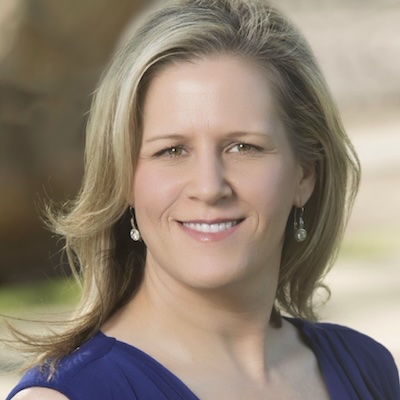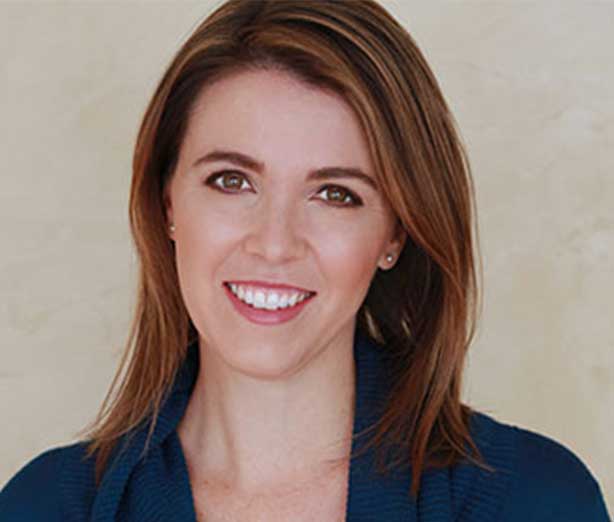5 Things Parents Can Do To Help Their Children Thrive and Excel In School
@charset “UTF-8″;.entry-content blockquote.elementor-blockquote:not(.alignright):not(.alignleft),.entry-summary blockquote.elementor-blockquote{margin-right:0;margin-left:0}.elementor-widget-blockquote blockquote{margin:0;padding:0;outline:0;font-size:100%;vertical-align:baseline;background:transparent;quotes:none;border:0;font-style:normal;color:#3f444b}.elementor-widget-blockquote blockquote .e-q-footer:after,.elementor-widget-blockquote blockquote .e-q-footer:before,.elementor-widget-blockquote blockquote:after,.elementor-widget-blockquote blockquote:before,.elementor-widget-blockquote blockquote cite:after,.elementor-widget-blockquote blockquote cite:before{content:none}.elementor-blockquote{transition:.3s}.elementor-blockquote__author,.elementor-blockquote__content{margin-bottom:0;font-style:normal}.elementor-blockquote__author{font-weight:700}.elementor-blockquote .e-q-footer{margin-top:12px;display:flex;justify-content:space-between}.elementor-blockquote__tweet-button{display:flex;transition:.3s;color:#1da1f2;align-self:flex-end;line-height:1;position:relative;width:-moz-max-content;width:max-content}.elementor-blockquote__tweet-button:hover{color:#0967a0}.elementor-blockquote__tweet-button span{font-weight:600}.elementor-blockquote__tweet-button i,.elementor-blockquote__tweet-button span{vertical-align:middle}.elementor-blockquote__tweet-button i+span,.elementor-blockquote__tweet-button svg+span{margin-left:.5em}.elementor-blockquote__tweet-button svg{fill:#1da1f2;height:1em;width:1em}.elementor-blockquote__tweet-label{white-space:pre-wrap}.elementor-blockquote–button-skin-bubble .elementor-blockquote__tweet-button,.elementor-blockquote–button-skin-classic .elementor-blockquote__tweet-button{padding:.7em 1.2em;border-radius:100em;background-color:#1da1f2;color:#fff;font-size:15px}.elementor-blockquote–button-skin-bubble .elementor-blockquote__tweet-button:hover,.elementor-blockquote–button-skin-classic .elementor-blockquote__tweet-button:hover{background-color:#0967a0;color:#fff}.elementor-blockquote–button-skin-bubble .elementor-blockquote__tweet-button:hover:before,.elementor-blockquote–button-skin-classic .elementor-blockquote__tweet-button:hover:before{border-right-color:#0967a0}.elementor-blockquote–button-skin-bubble .elementor-blockquote__tweet-button svg,.elementor-blockquote–button-skin-classic .elementor-blockquote__tweet-button svg{fill:#fff;height:1em;width:1em}.elementor-blockquote–button-skin-bubble.elementor-blockquote–button-view-icon .elementor-blockquote__tweet-button,.elementor-blockquote–button-skin-classic.elementor-blockquote–button-view-icon .elementor-blockquote__tweet-button{padding:0;width:2em;height:2em}.elementor-blockquote–button-skin-bubble.elementor-blockquote–button-view-icon .elementor-blockquote__tweet-button i,.elementor-blockquote–button-skin-classic.elementor-blockquote–button-view-icon .elementor-blockquote__tweet-button i{position:absolute;left:50%;top:50%;transform:translate(-50%,-50%)}.elementor-blockquote–button-skin-bubble .elementor-blockquote__tweet-button:before{content:””;border:.5em solid transparent;border-right-color:#1da1f2;position:absolute;left:-.8em;top:50%;transform:translateY(-50%) scaleY(.65);transition:.3s}.elementor-blockquote–button-skin-bubble.elementor-blockquote–align-left .elementor-blockquote__tweet-button:before{right:auto;left:-.8em;border-right-color:#1da1f2;border-left-color:transparent}.elementor-blockquote–button-skin-bubble.elementor-blockquote–align-left .elementor-blockquote__tweet-button:hover:before{border-right-color:#0967a0}.elementor-blockquote–button-skin-bubble.elementor-blockquote–align-right .elementor-blockquote__tweet-button:before{left:auto;right:-.8em;border-right-color:transparent;border-left-color:#1da1f2}.elementor-blockquote–button-skin-bubble.elementor-blockquote–align-right .elementor-blockquote__tweet-button:hover:before{border-left-color:#0967a0}.elementor-blockquote–skin-boxed .elementor-blockquote{background-color:#f9fafa;padding:30px}.elementor-blockquote–skin-border .elementor-blockquote{border-color:#f9fafa;border-left:7px #f9fafa;border-style:solid;padding-left:20px}.elementor-blockquote–skin-quotation .elementor-blockquote:before{content:”“”;font-size:100px;color:#f9fafa;font-family:Times New Roman,Times,serif;font-weight:900;line-height:1;display:block;height:.6em}.elementor-blockquote–skin-quotation .elementor-blockquote__content{margin-top:15px}.elementor-blockquote–align-left .elementor-blockquote__content{text-align:left}.elementor-blockquote–align-left .elementor-blockquote .e-q-footer{flex-direction:row}.elementor-blockquote–align-right .elementor-blockquote__content{text-align:right}.elementor-blockquote–align-right .elementor-blockquote .e-q-footer{flex-direction:row-reverse}.elementor-blockquote–align-center .elementor-blockquote{text-align:center}.elementor-blockquote–align-center .elementor-blockquote .e-q-footer,.elementor-blockquote–align-center .elementor-blockquote__author{display:block}.elementor-blockquote–align-center .elementor-blockquote__tweet-button{margin-right:auto;margin-left:auto}
Feed the brain: Our brain requires nutrients from our Diet to do its important work. Providing the brain with healthy foods for meals and snacks is very important. Include colorful fruits and vegetables, whole grain snacks, as well as nuts and seeds. Trying to limit processed and sugary foods helps the brain be ready for learning. Staying hydrated is also very important to a healthy brain. Our brain loves water.
LeAnne Stuver, M.Ed., BSN
Tweet
.elementor-widget-text-editor.elementor-drop-cap-view-stacked .elementor-drop-cap{background-color:#69727d;color:#fff}.elementor-widget-text-editor.elementor-drop-cap-view-framed .elementor-drop-cap{color:#69727d;border:3px solid;background-color:transparent}.elementor-widget-text-editor:not(.elementor-drop-cap-view-default) .elementor-drop-cap{margin-top:8px}.elementor-widget-text-editor:not(.elementor-drop-cap-view-default) .elementor-drop-cap-letter{width:1em;height:1em}.elementor-widget-text-editor .elementor-drop-cap{float:left;text-align:center;line-height:1;font-size:50px}.elementor-widget-text-editor .elementor-drop-cap-letter{display:inline-block}
School is really not easy these days. Many students have been out of school for a long time because of the pandemic, and the continued disruptions and anxieties are still breaking the flow of normal learning. What can parents do to help their children thrive and excel in school, particularly during these challenging and Anxiety-provoking times?
To address this, we started a new series called ‘5 Things Parents Can Do To Help Their Children Thrive and Excel In School.” In this interview series, we are talking to teachers, principals, Education experts, and successful parents to learn from their insights and experience.
As a part of this interview series, I had the pleasure to interview LeAnne Stuver.
LeAnne is a registered nurse with a master’s degree in health education. She has 10 years’ experience as a pediatric nurse in both hospital and home care settings, and as the director of multiple lifelong learning programs on a senior living campus for 20 years. LeAnne is currently the Director of Lifelong Learning at the Virtual Brain Health Center (VBHC). She has taught a wealth of educational programs to students of all ages. She is passionate about educating the community in practical ways they can learn to support their brain health and wellness.
Thank you so much for doing this with us! Before we dive in, our readers would love to “get to know you” a bit better. Can you share with us a bit about your “backstory”?
Iwanted to be a nurse for as long as I can remember. During my clinical rotations in Nursing school, I quickly learned that the area of nursing that excited me the most was pediatrics. I loved working with children and their parents. I found that my greatest nursing strength was my ability to educate children and their parents about their health condition and treatment plan. This skill was not really valued in the hospital environment at that time, so I returned to college to obtain my master’s degree in health education. My goal was to find a community health education position after graduation.
As a pediatric nurse, I never imagined working in a senior living environment, but I served as the Director of Lifelong Learning on a large senior living campus for 20 years. I was inspired by my mature students and their love of learning. I became a self-educated expert on the importance of lifelong learning for a healthy brain. I saw the benefits of continual learning both at work and at home with my young sons. I was always the mom who provided workbooks over the summer and made multiple trips to the library each month to encourage my boys to love learning and reading!
At the start of the pandemic, a former colleague from the senior living campus — Dr. Krystal Culler — called me and wondered if I would be interested in joining her to create a “virtual” brain health center. We were both concerned about older adults who were isolated at home and had lost access to most of their lifelong learning and social activities. Krystal and I launched the Virtual Brain Health Center (VBHC) in October 2020.
Although we originally thought our target audience would only be older adults in Northeast Ohio, we are pleasantly surprised that we are able to share brain health information with students of all ages across the world! We created our center to provide educational programs based on scientific research about brain health. Our goal is to teach people practical ways they can choose to improve their brain health through their Lifestyle choices. It is never too early or too late to start a brain healthy habit. Brain health is for everyone!
Can you share the most interesting story that happened to you since you started your career? Can you tell us what lesson you learned from that?
I have been inspired by so many of my students over the years. One that stands out is a woman from the senior living campus who was a holocaust survivor. She was in her 80’s and the only survivor from her family. She was one of my most eager students — ready to learn everything she could about any subject. English was not her first language, so she often had to look words up in a dictionary. She mentioned to me one day that she was frustrated that she couldn’t always find the words she wanted in the dictionary. She shared that the words were often spelled quite differently than they sounded. A lightbulb went off in my head. When my boys were young, they had a dictionary that they were able to look up words by the sounds and it would then direct them to the correct spelling and definition. I searched for the book at home and presented it to her one day. She was thrilled! She was an example to me that it is never too late to learn something new.
Can you please give us your favorite “Life Lesson Quote”? Can you share how that was relevant to you in your life?
My most often used quote is “Everything Happens for a Reason”. We used this saying so often with my boys in order to help them build resilience in the face of challenges growing up. I am a true believer that a setback or roadblock can be a blessing in disguise. The trick is to be open-minded enough to see the potential for Growth in the situation. I am proud to say that both of my boys took this quote to heart and continue to use it in their lives. My youngest son even had the quote tattooed on his body!
You are a successful leader. Which three character traits do you think were most instrumental to your success? Can you please share a story or example for each?
First, I am a very compassionate person. I am very cognizant of others’ needs whenever I am making decisions — whether it is family members, friends, co-workers, or clients. This made being both a mother and a pediatric nurse a very difficult job. I had to learn to separate my emotions at work from my home life. I often had young patients with very challenging health issues. Having young boys at home, it was often hard to separate my emotions as a mother from my job as a nurse.
I am also very patient. This is a crucial trait for both a pediatric nurse and a health educator. Parents who are learning to take care of their sick child need much patience from their nurses. People learning how to change their lifestyle factors to improve their brain health also need an educator with patience. Teaching patience in tackling one small change at a time is crucial to success. Think of learning to improve your diet or learning to increase your physical activity. Both need a gradual approach to be successful in the long run.
Lastly, I am a very optimistic person. I always see the glass as “half-full” rather than “half-empty”. I can always make lemonade out of lemons, and I can always see the silver lining in the dark clouds. I know at times I can drive my family and co-workers crazy with my optimism, but it is probably the trait I am most proud of. It has helped me deal with very difficult professional and personal situations and come out stronger and more resilient on the other side. It is also a trait that I hope to instill in all of my students as well.
Are you working on any exciting new projects now? How do you think that will help people?
I am very excited to share that we just published a children’s book with A Kids Co.. — “A Kids Book About Brain Health”. One of our core philosophies at the VBHC is that brain health is for everyone. The earlier in life that a person starts taking care of their brain, the better their brain will work for them throughout their entire life. Although this book is written for children ages 5–9, it is meant to be read together with an adult. We are excited to bring our messages about brain health to an intergenerational audience!
For the benefit of our readers, can you tell us a bit about why you are an authority on how to help children succeed in school?
Both my experience as a pediatric nurse educator and a mother of two boys who were excellent students throughout their educational careers (K-12 and college graduates) prepared me to speak on the subject of helping children succeed in school. Being a professional educator regarding the benefits of lifelong learning and brain health are also very applicable to parents who want their children to be good students with a healthy brain and also lifelong learners!
Ok, thank you for that. Let’s now jump to the main focus of our interview. Can you help articulate the main challenges that students face today that make it difficult to succeed in school?
Students have many challenges in today’s educational climate. While the internet is a huge advantage in education, it also presents many distractions. Social media and the prevalence of misinformation are probably two of the biggest challenges for parents and educators to navigate. It is essential that students be able to evaluate the validity of information they see online and always search for valid outlets for accurate information. Bullying has become easier as students are able to hide behind invisible screen names, making emotional wellness another huge concern for students. Artificial Intelligence (AI) is one of the newer challenges that is of concern to educators and parents alike.
Can you suggest a few reforms that you think schools should make to help students to thrive and excel?
I think schools should adopt brain healthy practices and environments. All students, teachers, staff, and families should be a part of a brain healthy community. This would enhance learning and increase the health and wellness of all involved parties. Brain health education should be a part of the curriculum beginning in preschool and should be evident in the school schedules, transportation, dietary services, and physical environment. It would be a big undertaking for school districts, but it would be an investment that would result in life-changing benefits for students and all the adults in their lives.
Can you please share your “5 Things Parents Can Do To Help Their Children Thrive and Excel In School?”
Parents can learn to provide a brain healthy environment for their children from the moment they are born. It is never too late to start incorporating these principles, however. The younger we learn brain healthy habits, the easier it is to continue them throughout our lifetime in order to grow the best brain possible!
- Protect the brain: We only have one brain, so we need to teach our children to take good care of it. Always using car seats and booster seats with young children and always having older children wear seatbelts is vital. Helmets for bike riding, roller blading and skateboarding — or any other dangerous activity that could result in a bump to the head — are also very important. Teaching children to let adults know if they hit their head hard enough to say “ouch” helps identify brain injuries quickly.
- Feed the brain: Our brain requires nutrients from our diet to do its important work. Providing the brain with healthy foods for meals and snacks is very important. Include colorful fruits and vegetables, whole grain snacks, as well as nuts and seeds. Trying to limit processed and sugary foods helps the brain be ready for learning. Staying hydrated is also very important to a healthy brain. Our brain loves water.
- Exercise the brain and body: Our brain demands a large blood supply to function well. Physical activity increases the blood flow to the brain and helps our brain function better. Keeping our brain active also helps keep it sharp. Some activities outside of school that challenge our kids’ brains are reading, playing games, participating in hobbies, or doing puzzles (computer/paper and pencil/jigsaw).
- Teach the brain to Sleep and relax: Taking 5 minute “brain breaks” throughout the day is vital to brain health. Walking away from books or computers to move around or go outside is one option. Perhaps it is listening to music for a few minutes or playing with a pet. This “break” lets the brain recharge and be more ready to return to learning. Getting a good night’s sleep is also vital for our brain. Having a set sleep schedule and a bedtime routine helps children build good sleep habits for a lifetime.
- Inspire a love of lifelong learning: Our brains love to learn. They thrive on new and challenging experiences. This can be trips to the library for books, visits to local museums/zoos/aquariums, learning to play an instrument, or learning to knit or build models, just to name a few. These types of educational activities during school breaks and summer vacations are important to keep the brain challenged.
As you know, teachers play such a huge role in shaping young lives. What would you suggest needs to be done to attract top talent to the education field?
Teachers have a very important and difficult job. They need to feel supported by their employer and the parents of their students. I think having school districts that embrace a brain healthy environment would attract teachers to the field and to those districts. If everyone’s brains are working at full potential, that would be a wonderful environment for all to spend their day!
We are blessed that some of the biggest names in Business, VC funding, Sports, and Entertainment read this column. Is there a person in the world, or in the US, with whom you would love to have a private breakfast or lunch, and why? He or she might just see this if we tag them 
I would love to meet Dr. Sanjay Gupta. I am a big fan of his reporting on CNN, his book “Keep Sharp: Build a Better Brain at Any Age” and his podcast “Chasing Life”.
.elementor-widget-image{text-align:center}.elementor-widget-image a{display:inline-block}.elementor-widget-image a img[src$=”.svg”]{width:48px}.elementor-widget-image img{vertical-align:middle;display:inline-block}

Dr. Krystal L. Culler, DBH, MA is a holistic brain health expert with nearly twenty years of experience working with individuals with brain-related diagnoses, their families, providers, and advocacy organizations. She has received numerous international and national awards for innovation in brain health programs and wellness services with a global impact spanning 55+ countries. She is a Doctor of Behavioral Health with an educational background in the behavioral sciences (psychology, gerontology, and sociology). She is the Founder of the Virtual Brain Health Center. Her mission: brain care for all.

























